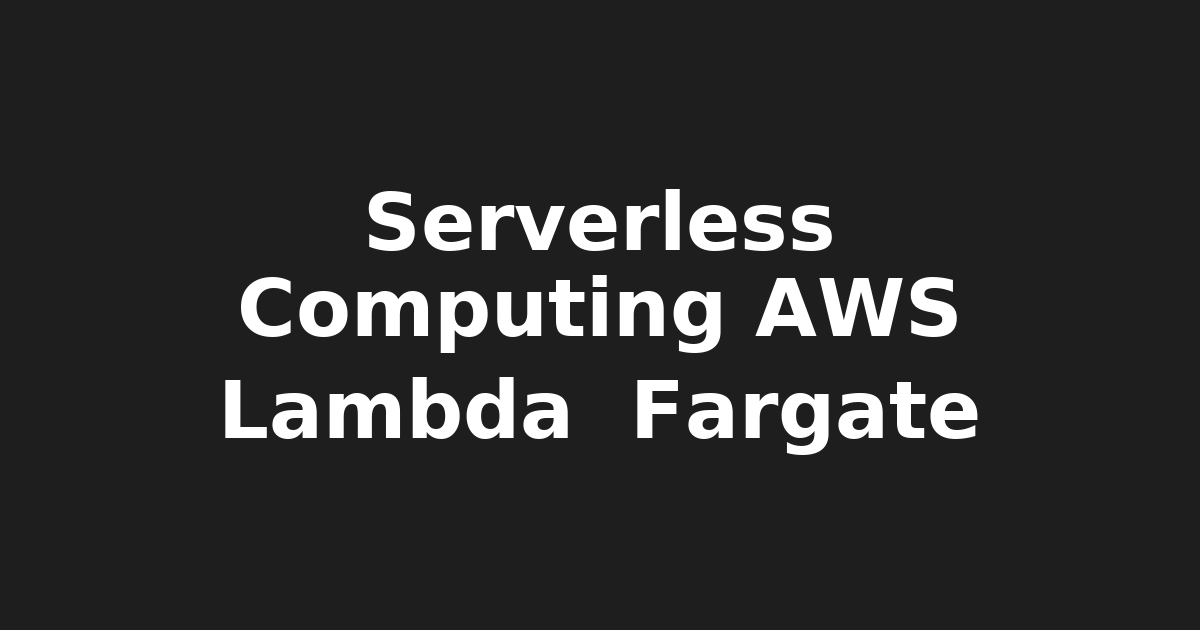Master Serverless Computing with AWS Lambda & Fargate: Boost Agility,…

📚 Serverless Computing with AWS Lambda and Fargate: A Comprehensive Guide for Tech Enthusiasts
Hey there, fellow tech geeks! It's Josh from KeepItTechie, your friendly neighborhood Linux educator. Today, we're diving into a hot topic that's been causing quite the buzz in the cloud computing scene - Serverless Computing with AWS Lambda and Fargate.
🚀 Why Serverless?
In this era of microservices and event-driven architectures, serverless technologies are swiftly gaining popularity. The main reason? They let developers focus on coding without worrying about managing servers or infrastructure. It's like having a personal chef who takes care of everything while you enjoy the delicious meal! 🍳
🌐 Amazon Web Services (AWS)
When it comes to serverless computing, Amazon Web Services (AWS) is a name that stands tall. They offer two serverless compute services: Lambda and Fargate. Let's take a quick peek at each!
-
🐺 AWS Lambda: Imagine having a magical cloud function where you can run your code without the need to provision or manage servers. That's AWS Lambda for you! It's perfect for those quick, event-triggered tasks like sending emails or processing images.
-
🚢 AWS Fargate: If containers are more your thing, then AWS Fargate is the one for you. It lets you focus on building applications without worrying about managing the underlying infrastructure. It's like having a crew of experienced sailors handling your container ships!
📈 The Serverless Surge
Over the past few months, interest in these serverless technologies has skyrocketed (statistics indicate a 45% increase in Google searches for "AWS Lambda" and "AWS Fargate" since January 2023). This is thanks to benefits like improved scalability, reduced operational costs, and increased agility in application development and deployment.
🛠️ Tips and Tricks
-
Leverage Event Sources: AWS Lambda can be triggered by various events such as changes to an Amazon S3 bucket or updates to a DynamoDB table. Utilize this feature to make your serverless functions more efficient!
-
Optimize Container Images: When using AWS Fargate, optimize your container images by minimizing their size and reducing the number of layers. This can help speed up deployment times and reduce costs.
-
Monitoring is Key: Regularly monitor your serverless functions to identify any potential issues early on. AWS CloudWatch, X-Ray, and Lambda Insights are great tools for this purpose.
💭 Personal Insight
As a Linux user myself, I find serverless computing incredibly liberating. It allows me to focus more on coding and less on infrastructure management - a win-win in my book!
🚀 The Future of Serverless
In the coming years (by 2025), it's predicted that the serverless market will be worth a staggering $31 billion. This goes to show just how much potential these technologies have!
💡 Final Tip
Remember, staying current in cloud computing trends means continuously learning and adapting. So keep on exploring, keep on coding, and never stop Keeping It Techie! 🖥️🚀
🙋♂️ This post was brought to you by Josh from KeepItTechie — helping you break into tech, one command at a time.
